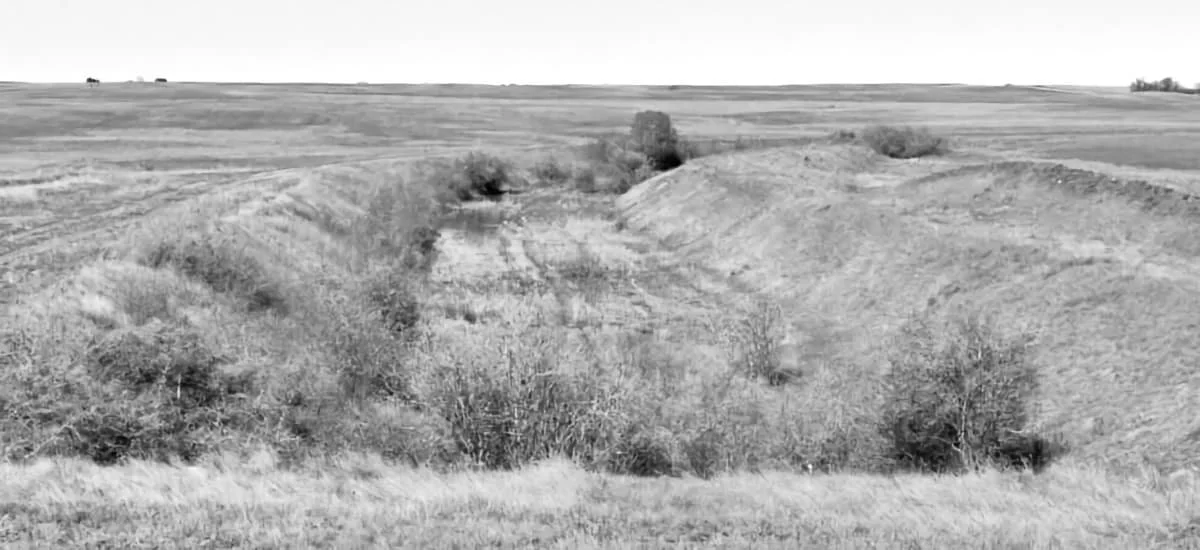Pretty sure canals aren’t supposed to have trees in them
Stantec and MPE Engineering Firms Selected for Westside Irrigation Rehabilitation Project
BY BRIAN ZINCHUK
REGINA – On July 25, the Government of Saskatchewan announced the awarding of the next planning and engineering design work for Westside Irrigation Rehabilitation Project (WIRP) to Prairie Engineering Partners, a joint venture from Stantec and MPE engineering firms.
“Our government is committed to this project, and this is the next step in moving ahead the Lake Diefenbaker Irrigation Projects to the construction phase,” Minister Responsible for the Water Security Agency David Marit said. “This project starts at the waters of Lake Diefenbaker but has the potential to create major benefits for all of Saskatchewan.”
It’s a pretty good bet to be a functional irrigation canal, trees in the middle of it are a no-no. But that was the case this past May when Google’s Streetview car captured this canal south of Outlook. Google Streetview
In March, Premier Scott Moe announced the province is moving forward with constructing the early works of the first 90,000 acres of the Lake Diefenbaker Irrigation Projects (LDIP). The WIRP is the first part of the overall LDIP. It will optimize the existing infrastructure and develop new infrastructure from Lake Diefenbaker to the Ardath-Swanson area near Conquest to create 90,000 acres of irrigated land.
To say the initial irrigation plan had stalled for many years would be an understatement. While working on the Alliance Pipeline project in 1999, Pipeline Online saw dry, unused canals with trees growing in the middle of the bottom of them. And that has persisted, as Google Streetview 2024 imagery shows trees in the middle of canals near Outlook.
A government team evaluated the proposals based on three main areas: technical criteria, financial costs and face-to-face interviews. Prairie Engineering Partners will be responsible for completing the fieldwork, planning and engineering to the next stage of project design.
The engineering, design and engagement with stakeholders and Indigenous rights holders is expected to be done over the next year with major construction of the 90,000 acres being targeted to start in 2025 to 2026.
Since 2020, over 58,000 acres of irrigation have been developed, the largest growth since the early 1980s, the government said. “This is on track to achieve and exceed the goal of 85,000 acres in the Saskatchewan Growth Plan for 2030.”

